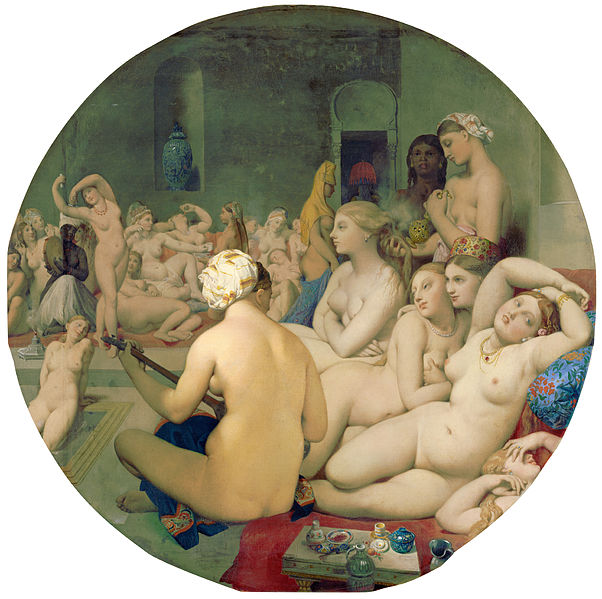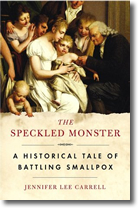The Turkish Bath (Le Bain turc) by Jean-Auguste-Dominique Ingres (1862)
Louvre, Paris
“All around her… women sat, knelt, and walked with a majestic grace that made her think of Milton’s Eve, clad in nothing but proud honor. They were beautiful in face and slender of body, and their long, lustrous falls of hair were unlike anything she had seen among the rarely washed, oft powdered and pomaded heads of Europe. But what entranced her more than anything else was the shining expanse of smooth skin, all of it unmarred, as she was all too aware that hers was, by the red pits and twists of smallpox scars.”
—The Speckled Monster
A century later, an exquisitely talented young French painter took notes on what was the most erotic and no doubt most read of Lady Mary’s “Embassy Letters.” As an 82-year-old man, Jean-Auguste-Dominique Ingres at last returned to the notes of his hot-blooded youth and delivered her scene in paint.








